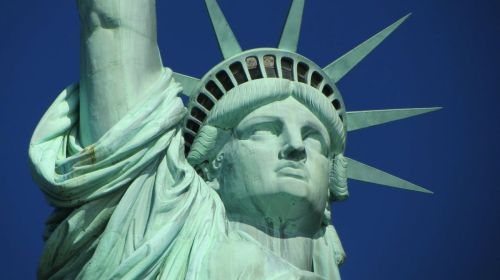Christ The Redeemer statue in Rio de Janeiro is a symbol of this city, an icon of Brazil and the Catholics living there. Erected to commemorate the centenary of Brazil's independence, Christ with outstretched arms embraces the city, as well as all the pilgrims who come to it.
Corcovado (Portuguese for hunchback) is a 710 m high granite mountain located in the southwest of Rio de Janeiro. The mountain was initially called the Mount of Temptation. From its top (where the monument is located) there is a panoramic view of Rio de Janeiro, including the bay of Lagoa Rodrigo de Freitas, the beaches of Copacabana and Ipanema, and the extensive shantytowns in the city, the so-called favelas.
This was decided by millions of votes of people who decided that this monument deserves an honorary title because of its size and because of the importance it has for Catholics in Brazil and around the world.
Father Pedro Maria Boss came up with this idea and even asked Queen Elizabeth for funds, but ultimately the idea was not implemented.
In 1921, money collection for this purpose began. A large part of the needed funds were provided by the Catholic Church, but financial support from Brazilian Catholics was also needed.
The construction took as long as 9 years because there were many difficulties, including the specificity of the terrain, difficult access to the construction site, and lush vegetation covering the hill. There were also changes in the shape of the project and the materials used for its implementation.
However, the design chosen was one depicting Christ with open arms, which was Hector de Silva's idea.
The author of the statue's head is the Romanian sculptor Gheorghe Leonida, which was discovered at the end of the 20th century and confirmed by the descendants of the sculptor's sister.
The head is 3.5 meters high and the distance between the fingertips of the hands is 28 meters. The monument weighs over 600 tons.
Right behind it is the Figure of Christ the Pacific in Lima, Peru (37 meters high, the figure itself is 22 meters), in third place is the Monument of Christ the King in Świebodzin, Poland (36 meters high, the figure itself is 33 meters).
He did it by turning on the lighting from a yacht moored in the port of Genoa.
After installing the new lighting, it was done by Pope Paul VI, on October 12, 1981, on the occasion of the 50th anniversary of the erection of the monument, by Pope John Paul II.
Many people decide to get married in this church.
However, the biggest problem is lightning, which damages the monument (in 2014, lightning broke off the end of one of the figures' fingers).
You can also use the escalators or elevator.
This was condemned by the then-mayor of the city, who called the act a "crime against the nation." The "artists" surrendered themselves to justice.












